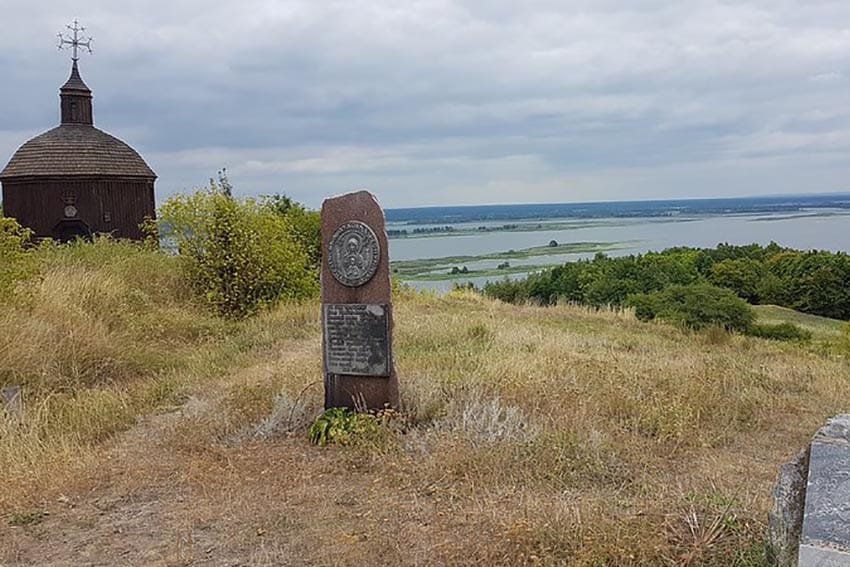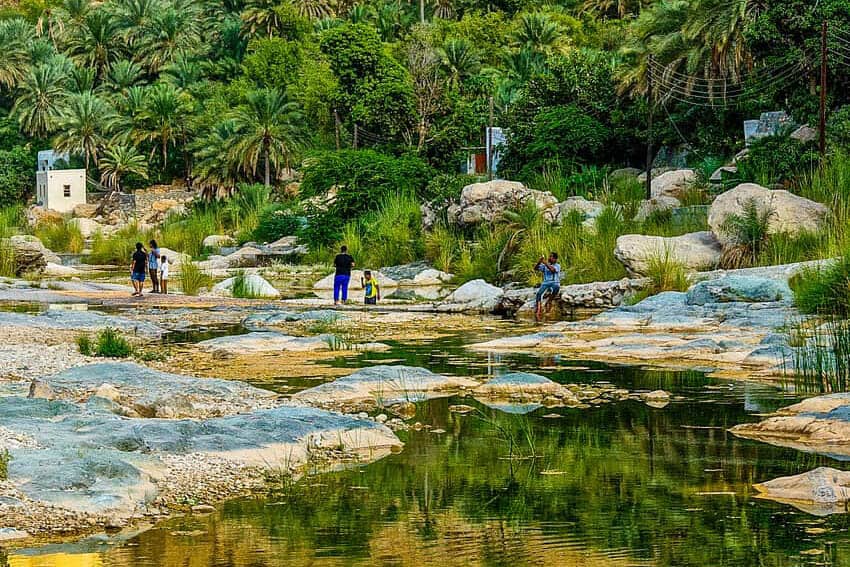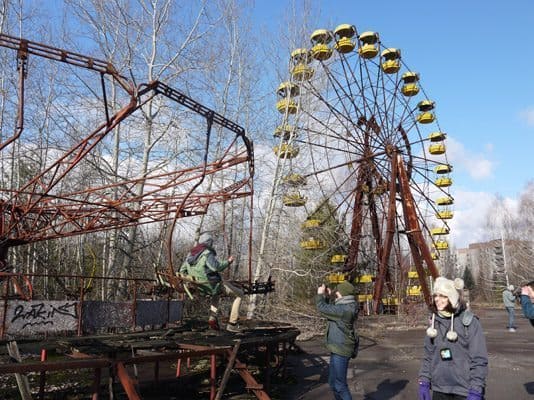
A Radiating Experience: Visiting Chernobyl, Ukraine
By Dr Nicola Davies
There are 7 billion people on earth and yet on this bitterly cold April morning just 11 of them set out from Kiev to visit Chernobyl with it dangers and fascinating history.
In the early hours of 26th April 1986, the town of Pripyat in Ukraine, would change forever, as would the lives of its 50.000 inhabitants. It was here that one of the most serious disasters occurred, when one of four nuclear reactors at the Chernobyl power station exploded.
Two workers were killed instantly and 40 hours later the residents of Pripyat were ordered to evacuate – with no one to ever return. Almost 28 years on, I decided to visit this ‘ghost town’ on one of several Chernobyl Tours that are available here.
Settling in to the Pripyat Hotel

After researching many tour companies, I opted for CHERNOBYLwel.com. They had good ratings on TripAdvisor and after reading up on the dangers of visiting Chernobyl, I didn’t want to take any risks – I wanted to be in the hands of people who knew what they were doing.
On entering the Chernobyl exclusion zone, which was manned by a uniformed guy holding a gun, we checked in to Pripyat Hotel and had a short instruction meeting followed by lunch. For lunch, we were presented with the traditional Ukrainian dish Varenyky – stuffed dumplings. We had the same for breakfast and dinner, but each time with a different filling – meat, mashed potato, and mushrooms.
I must admit that I would have preferred some Cornflakes or toast for breakfast. The guide explicitly warns that the food isn’t the best and I certainly appreciated the black tea to wash it all down with – and I don’t even like black tea.
Wine and alcoholic beverages were available at the bar for an extra cost. Some of the tour group stayed up late to try out the local beverages, but I decided to snuggle up in my room and watch ‘Chernobyl Diaries,’ a horror about the abandoned city I was about to explore. ‘Snuggling’ might sound a bit more comfortable than it actually was. It was rather like a hostel – cold, shared showers, staff watching in case you left the building and ventured into a dangerous area outside.

At one point, I strolled a bit too far to the edge of the car park and was called back by a member of staff. It was a rather military set up, but all part of the experience.
I was also very aware that the only guests were those on my tour, plus a couple of men who had been working on the new safe confinement in Chernobyl. Still dressed in their work clothes, I quietly wondered whether they might be emitting their own radiation.
Chernobyl City and the New Safe Confinement
The first day of the tour consisted of Chernobyl city, the docks, and the open air military museum. Chernobyl city, 14.5km from the Chernobyl nuclear power plant, was once home to 16,000 people. All the pipes carrying water through the town have been placed above ground to avoid contaminating the water supply. The docks, also named ‘the ship graveyard,’ contain numerous boats that now lie broken and reddish brown while they slowly sink deeper into the river.
The machinery used in the clean-up has also been given a place of honour in the open air museum in Chernobyl. This displays the robots and equipment used in attempts to clean the radioactive waste after the meltdown – although when the robotics of the 80’s were felled by the impossibly high levels of radiation, the task fell to human ‘liquidators,’ many of whom died from radiation sickness or cancer.
I also had the opportunity to see Chernobyl nuclear power plant, including the cooling towers of reactors 5 and 6, which were under construction when reactor 4 exploded and were therefore never completed. They were being built on an artificial island, and still have an air of expectation as they lie surrounded by abandoned and rusting construction cranes. Reactor 3 is directly adjacent to the destroyed reactor 4.
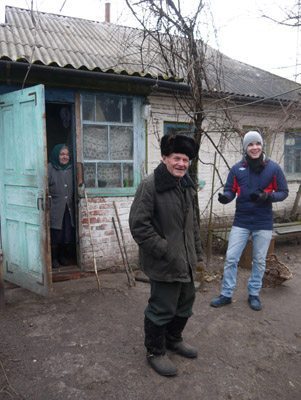
The hastily erected sarcophagus encasing the remains of the disaster can be viewed from a safe distance, although I must admit that when seeing the rust-streaked concrete and metal containment, no distance felt truly safe. Just being close to the aging containment made my skin crawl.
I was very aware that the radiation leaking from the sarcophagus is increasing and the structure is in danger of collapsing, necessitating the construction of the new safe confinement, which is already many year later than planned. We could see this new construction taking form from our vantage point. Reactors 1 and 2 have been slowly decommissioned and still employ a skeleton staff to maintain the reactors.
Meeting the Resettlers
The day was rounded off by meeting with some of the local residents. They were told the evacuation was temporary and, when it became evident that they wouldn’t be allowed to return. The handful who rebelled and resettled after a few months continue to raise livestock such as pigs and chickens, living humble lives.
They told me that they often pick mushrooms and berries from the red forest, the most highly contaminated food in the radiation saturated land, and yet they are certainly not the radiation-mutated monsters that Hollywood would like to portray them as (although one did have a missing arm). They seemed filled with hope and joy that completely flies in the face of the desolation and doom of the sarcophagus.
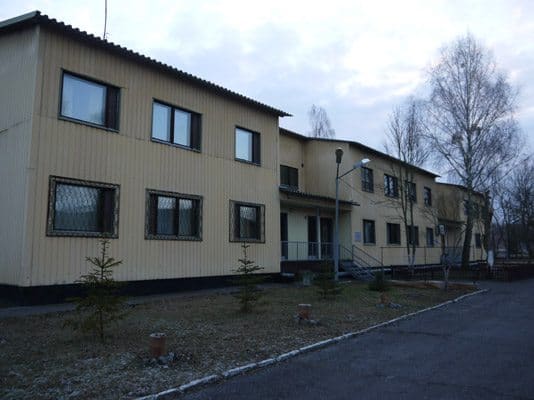
The gentleman I met seemed quite content in his old, falling down house. He had his wife, cat, chickens, and a pig – the survival necessities. He was, however, very pleased to receive the box of chocolates I gave him and quickly scuttled into the house with them before he would entertain our questions. Clearly, there are some luxuries missing in their lives. On returning he informed us he only has two neighbours and that he refused to speak to them – he was “sick of the sight them.”
The City of Ghosts
Day two was dedicated to the ‘City of Ghosts’ – Pripyat. The city was designed to house 50,000 people – those who worked at the nuclear power plant and their families. Walking through the silent deserted streets with paint peeling off the walls and shattered windows is haunting. I could imagine the lives of the residents unfolding and yet frozen in a moment of utter devastation. Not only was there almost 30 years of decay, but the army had also moved in to destroy the buildings to prevent squatting. Utter devastation.
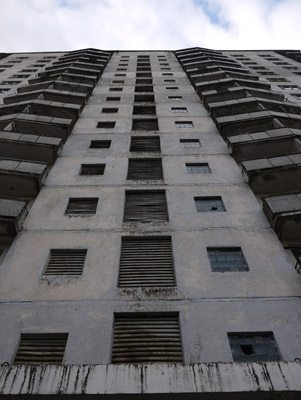
I visited the maternity ward of the hospital and the white painted metal cribs lined up in neat rows reminded me that this was where many of the 750 babies born annually in Pripyat took their first breaths. The empty cribs simultaneously gave me a sense of relief that most of the previous occupants evacuated in time, and a sadness for the lives that were lost so young and the future lives that this hospital would never see beginning.
I was keen to visit the basement, which was home to some of the clothing worn by the now dead firefighters involved in the clean up, but the guide said it was too dangerous – the boots of the firefighters are one of the most radioactive items in the zone and the basement is one of the most radioactive places on earth.
The Kindergarten was next on our route. The place where innocent faces joyously learned to recognise shapes and colours is now mostly dust and debris. The abandoned playground equipment is completely overgrown with vegetation and toys lie gathering mold and taking on a new life.
The grammar school, previously teaming with energetic and enthusiastic enquiring minds is eerily silent, with gas masks and dolls under a blanket of dust. While a portion of my mind tells me that this is most likely staged for dramatic effect, I can’t help but think of the impact the evacuation would have had on the lives of those children.
The public swimming pool is long since empty and the tiles peel off the sides to litter the bottom. A diving board and lanes remain, like a sculpture dedicated to the essence of swimming. I stood in it and felt its depths. Apparently, scientists investigating the incident used to swim here after a day’s work. The sports centre, once a symbol of vitality, is also barren and lifeless.
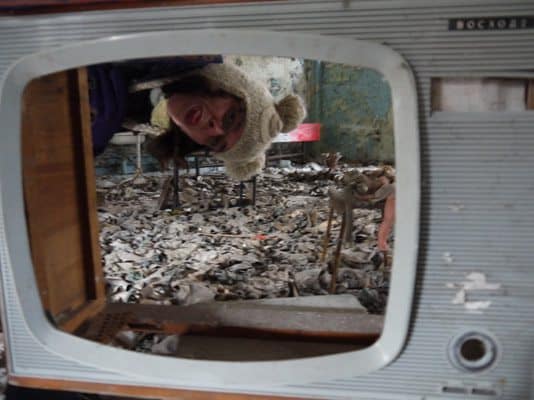
The port, situated on the Pripyat River, no longer has a bustling cafe where residents used to relax and commute to their jobs at the Chernobyl nuclear power plant. The forest is much more overgrown here and my Geiger counter told me this was not a safe area.
I didn’t linger long, but long enough to admire the cheerful and colorful stained glass window that would be at home in any art gallery. The Polissya hotel has been similarly partially reclaimed by the forest that surrounds the town. Saplings have even taken up residence in some of the ground floor rooms.
The fairground of Pripyat is perhaps the most eerie reminder of the tragedy that befell the town. They were only open for a day before the town was abandoned and the rides left to ruin. Dodgem cars lie broken, rusted and overgrown, while the still vibrant yellow of the Ferris wheel carriages are in stark contrast to the rusted structure that holds them aloft. The radiation levels here were also higher than normal in Pripyat, making the time I spent there even more nerve-wracking. Perhaps the most eerie aspect of this experience was the stark contrast between the noise expected at a fairground and the complete silence that ensued.
A Risky Trip?
Despite the levels of radiation now being only a fraction of what they were in 1986, we were reassured that during our two days in the Chernobyl zone we would only receive a radiation dose equal to one x-ray. In numbers, this equates to 4 microSieverts; the safe limit is 100 microSieverts per day. This didn’t stop me worrying every time my Geiger counter started to bleep because we were in a particularly radioactive area.
When leaving the Chernobyl zone it was necessary to pass compulsory radiation control of clothes, footwear, personal items and pass compulsory radiation control of transport. If contamination exceeds the established control levels, personal clothes, footwear, and items are subject to decontamination. At times, some of the tour group asked to go to the more dangerous places and the guide would openly inform they could. However, he warned they wouldn’t get past the radiation exit and would need to be decontaminated. No one asked what that meant and no one ventured off.
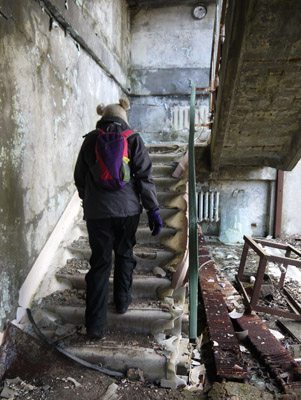
Would I recommend a visit to Chernobyl? Yes! While it was certainly an eerie experience, it was also a once in a lifetime experience. I can’t imagine replicating the feelings, atmosphere, and insight gained from this trip. It was scary and unsettling, while at the same time quite inspirational – to get a glimpse into the devastation experienced by those who lived in and around Chernobyl, as well as the sheer determination of the resettlers.
It truly was a privilege to be in a place where time was standing still. I was one of 11 people back from an amazing experience, one which many will not embark on. For those eager to have such an experience, the sooner the better – the buildings are starting to crumble and soon it may be too dangerous to explore the ghost town that is Pripyat.
 Nicola Davies is a Doctor of Psychology and Freelance Writer from Bedfordshire, UK. She has written for over 100 magazines in 10 countries, (her website) and has recently expanded into travel writing. You can follow her on Twitter @healthpsychuk or sign up to her blog.
Nicola Davies is a Doctor of Psychology and Freelance Writer from Bedfordshire, UK. She has written for over 100 magazines in 10 countries, (her website) and has recently expanded into travel writing. You can follow her on Twitter @healthpsychuk or sign up to her blog.
- The Wild Mississippi: 2340 Miles Across Ten States - April 8, 2024
- Exploring the Floating Villages of Tonle’ Sap Lake - April 3, 2024
- Woman Traveling Solo on Turkish Buses - March 27, 2024


